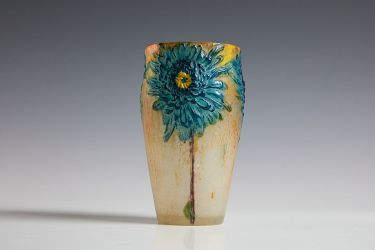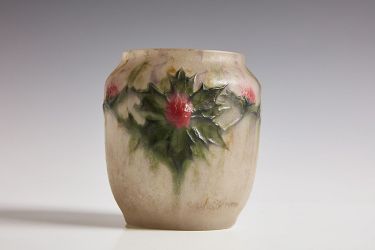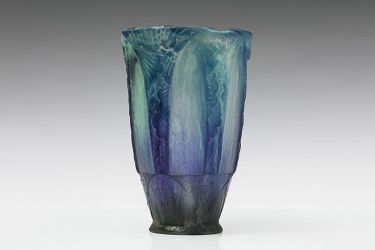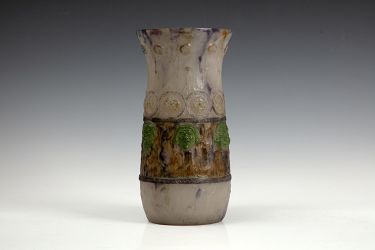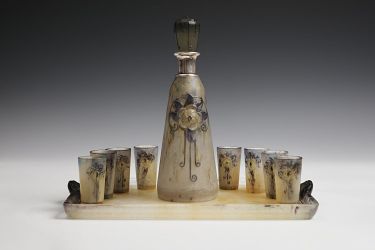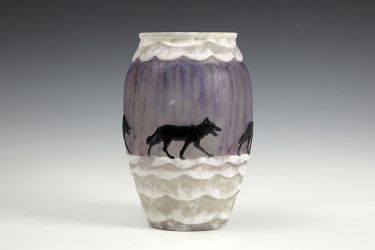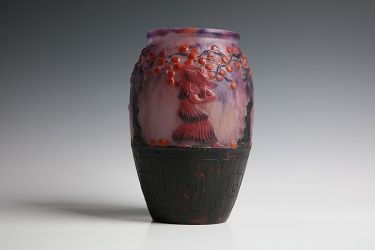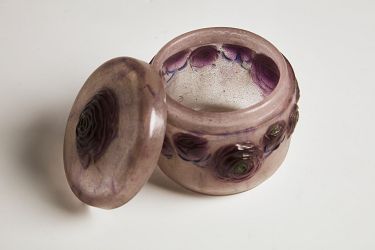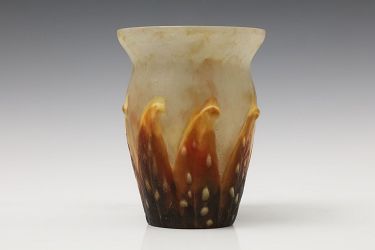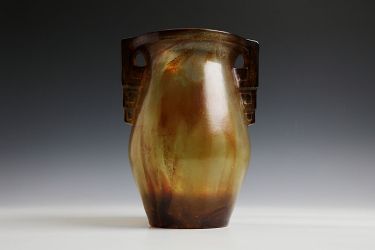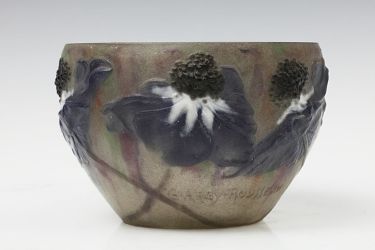Gabriel Argy-Rousseau
Meslay-le-Vidame, March 17, 1885 - Paris, February 20, 1953
Gabriel Argy-Rousseau was born in Meslay-le-Vidame into a peasant family and from his childhood demonstrated strong passion for studies. For his achievements in primary school Gabriel received a scholarship which enabled him to continue his secondary education in Chartres. In 1902, Rousseau entered the National School of Ceramics in Sèvres (École de céramique de Sèvres), successfully graduated from it and soon became the head of a ceramic research laboratory. In 1913, he married Marianne Argyriades. At the same time, Rousseau added part of his wife's surname to his surname, and from then on he was known as Gabriel Argy-Rousseau.
He opened his own workshop in Paris, where he experimented with pâte de verre. Argy-Rousseau became interested in working with glass paste while studying at Sèvres. His early works were realized in the Art Nouveau style. The distinctive décor was nature-inspired and comprised of foliage patterns, fruits, insects, etc. In the period after the First World War, the fame and success of Argy-Rousseau only increased. He created the society "Pate de verre. Argy-Rousseau”. He was the owner of the workshop with large staff of technologists, decorators and other employees. His authority and competence were confirmed by the fact that in 1925, Argy-Rousseau was appointed a member of the World Exhibition of Decorative Arts jury in the section "Glass".
In the 1920s his works were modified in accordance with the tastes of the emerging Art Deco style. The shape of his items became austere and monumental; geometricity and continence dominated in their decor. In the 1930s, interest in pâte de verre waned and Argy-Rousseau began working with pâte de cristal, technique based on crystal masses.
Gabriel Argy-Rousseau died on 20 February 1953 in Paris. His art legacy is comprised of an impressive number of glass works that are among the interests of researchers around the world.
